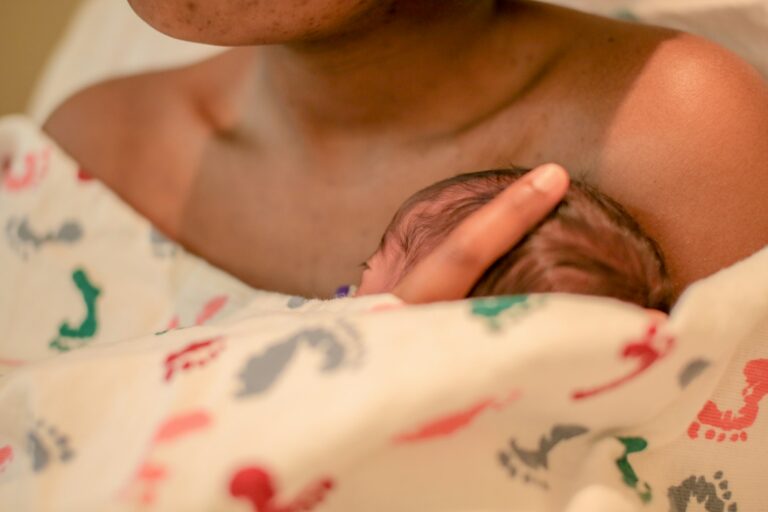The moment when the hospital doors finally open onto your first journey home with your newborn—a swirl of relief, excitement, uncertainty and, sometimes, outright bewilderment. So many parents find themselves oscillating between that urge to nest and a volley of practical worries: What needs checking before the doctor signs the paperwork? Who will help at home in the early days? What postpartum warning signs should not be ignored? This transition, commonly known as Preparing for hospital discharge after childbirth, is both an emotional leap and a logistical marathon. Preparing well not only answers restless midnight questions—it actually plays a role in medical safety and smoother recovery for both mother and baby. Going beyond a checklist, you’ll find that understanding how to balance emotional wellbeing, anticipate practical needs, and arrange support is just as vital as stocking the diaper bag or remembering to install the car seat. Here’s a look at everything worth considering, from medical assessments to home organisation, as you prepare for this memorable milestone.
Early Preparation: Why Advance Planning Matters
Preparing for hospital discharge after childbirth is a process, not just a point in time. Perhaps you picture a clinical round and a pile of forms, but the heart of it sits with education—equipping you to anticipate the normal (and abnormal), to recognise your own recovery needs and those of your baby, and to synchronise your support system before stepping out of the hospital gates. Imagine suddenly being responsible for feeding cues, postpartum pain, and a delicate umbilical cord stump—well before breakfast. The medical team, observing both physical and emotional readiness, nudges you towards this confidence. Early prepping covers explanation of postpartum health signs, feeding techniques, mental health checks, and even transport logistics—such as double-checking correct car seat installation. The timing? Most uncomplicated vaginal births are cleared between 24 to 48 hours, with cesarean births needing a slightly longer watch (often up to 72 hours, depending on healing and infant well-being).
Why Rushing Isn’t Always Wise
Discharge may occur quickly in healthy cases, but going too fast has its risks. The period between birth and homecoming is a learning window, charting feeding, mother’s mobility, emotional shifts, and the unpredictable rhythm of a newborn. Sometimes, factors such as preterm birth, maternal health issues, or an infant showing signs of jaundice lengthen the stay. Medical caution here is your friend—every extra hour in hospital can be an investment in confidence once at home.
Core Criteria: When is it Safe to Go Home?
Preparing for hospital discharge after childbirth invokes a stringent checklist. Before homecoming, healthcare providers conduct focused medical assessments—vital signs, examination of any incisions (if cesarean), monitoring postpartum bleeding, and assessment of newborn reflexes and feeding. Maternal and infant stability is fundamental. Alongside these checks, attention turns to emotional state: does the mother appear anxious or overwhelmed; does she articulate what to expect at home; is there visible support by her side? Some hospitals validate readiness through simple teach-back methods—asking parents to repeat key care steps—to reinforce understanding.
Confidence in Newborn Care
Beyond medical basics, real-life skills are paramount. Safe umbilical cord care, recognising dehydration (fewer wet nappies, sunken fontanelle), and understanding the difference between normal irritability and excessive crying arm parents with practical mastery. Clear written takeaway instructions, supplemented by verbal reinforcement, ensure families don’t leave with unanswered questions gnawing at them.
Family Support and Home Context
Evaluating support networks is integral to preparing for hospital discharge after childbirth. Are relatives or friends available to help, even temporarily? Do living arrangements allow for restful recovery and basic baby care? Considerations extend to housing stability and access to food, transport, and emergency assistance. Sometimes, knowing whom to call if breastfeeding falters or if paperwork becomes confusing is half the battle.
Discharge Logistics: From Forms to Final Checks
The journey continues, paperwork in tow. Hospitals require completion of essential documents—discharge summaries, medical notes, birth certificate applications, and insurance forms. These are more than administrative hurdles: a detailed summary lists treatments, screenings, medications and follow-up appointments, offering a roadmap for the weeks ahead.
Before giving the all-clear, a pause for the last round of clinical checks: mother’s blood pressure and pulse, wound healing, lochia pattern (for vaginal birth), and a top-to-toe newborn review. This last scrutiny becomes a springboard for any final questions or hesitations.
The Learning Curve: From Feeding to Postpartum Danger Signs
Discharge is not a “goodbye”—it’s a handover of responsibility, and education is key. Parents must know the red-flags: heavy vaginal bleeding, foul-smelling discharge, sudden fever, or severe wound pain for mothers. For babies: fever, persistent vomiting, trouble feeding, or excessive sleepiness imply prompt attention is needed. Practical advice covers sleep (back to sleep position, safe bedding), diaper care, cord hygiene, and feeding—whether breastfeeding or formula.
The Packing Checklist: Essentials for Hospital and Beyond
Amidst emotions, practicalities beckon. What actually needs packing for the hospital stay and first trip home? Here’s a snapshot:
- Valid ID, insurance documents, mobile and charger, any prescriptions.
- Comfortable, loose clothing for mother; maternity pads, nursing bras, slippers, and personal toiletries.
- Items for comfort such as soft pajamas, nipple cream, peri bottle, and a bottle for water.
- Baby’s kit: multiple outfits, soft hat, socks, swaddling blanket, and a properly installed infant car seat. Most hospitals insist on this for discharge—double-check it.
- Optional extras: baby nail clippers, pre-washed baby clothes, your preferred brands of wipes and diapers.
Having everything on hand means one less worry when you eventually step back through your own door.
Getting Organised: Home Readiness for Baby and Mother
Preparing the home environment is central to the Preparing for hospital discharge after childbirth process. The goal: safety, accessibility, and comfort.
- Set up a safe sleep space: bassinet or crib with a firm mattress, no pillows or toys.
- Keep baby essentials (diapers, wipes, clothes) within easy reach, and prepare a dedicated area for feeding—perhaps with a supportive chair and supplies handy.
- Stock up on postpartum needs: maternity pads, pain relievers, a peri bottle for hygiene, and snacks that can be eaten one-handed.
- Double-check household supplies—laundry can wait, but nutrition cannot. Prepare and freeze meals or delegate cooking and shopping to loved ones.
- Identify important contact numbers (doctor, local health services) and place them where they can be found in a pinch.
Emotional Wellbeing: Adjusting to the Days After Birth
Few transitions are as emotionally charged as arriving home with a newborn. The sheer burst of hormonal change, uneven sleep, physical discomfort, and the learning curve of newborn care—each presses on different nerves. While joy is common, so are mood swings or moments of doubt. Early postnatal blues (transient sadness) are frequently observed, but persistent or severe emotions may signal postpartum depression, a medical condition that deserves attention and support.
Conversation and transparency between parents are anchors: simply asking, “What do you need today?” (and listening for the answer) often opens pathways to understanding. Drawing family or friends into caregiving, even for just a few hours, can be remarkably rejuvenating.
Postpartum Recovery and Pain Management
Healing after childbirth is rarely linear. Lochia (post-birth bleeding) may last for weeks; perineal soreness, common after vaginal birth. For cesarean mothers, special attention to the incision is essential—watch for increased pain, redness, or pus. Cold packs, witch hazel pads, and gentle cleansing with a peri bottle help with comfort. Pain medications, prescribed by the doctor, should be used as directed.
Rest may feel elusive—nighttime feedings and suddenly tiny, erratic sleep windows—but accepting help, and keeping movement gentle, support faster recovery. Pay attention to signs: fever, severe pain, unpleasant odor, or lasting sadness all call for medical review.
Newborn Care Essentials
Feeding should occur on demand—typically every 2–3 hours, whether breast or bottle. Baby should always sleep on their back, in a safety-approved crib, sharing your room but not your bed. Diapers must be changed frequently—soft wipes or cloths prevent rashes. Cord care is surprisingly simple: keep it dry, fold diapers below the stump, sponge bathing until it drops off.
Keep notes on feeding and nappy changes if it helps you track patterns in a haze of broken sleep. If baby develops fever, trouble feeding, persistent jaundice, or unusual drowsiness, seek advice immediately. Emergency numbers should always be within reach.
Overcoming Common Barriers and Early Challenges
Fatigue, information overload, practical uncertainties, and sometimes, conflicting advice. These are nearly universal in the first weeks, but temporary. Coping starts with rest—when possible—and a flexible daily routine. Accepting help, even with “simple” chores like laundry or meal preparation, is both practical and emotionally relieving.
A logbook or app for tracking feeding and diaper changes can bring order to the chaos. Communication within the couple, but also with extended family, preserves emotional sanity and team spirit. If distress becomes overwhelming, or if symptoms of depression persist, reaching out is vital—not as an admission of weakness, but as a necessary step in recovery.
Gentle Routines: Planning for Flexibility and Support
Preparing for hospital discharge after childbirth does not demand rigid plans, but encourages adaptable routines. Some parents thrive with scheduled feeds and sleep, others find that listening to baby’s cues creates a gentler rhythm. Reviewing support resources and follow-up appointments, jotting down questions for the next checkup, and keeping lines open with healthcare teams strengthens self-assurance.
Above all, remember: Every family invents its own routine. The “perfect” system matters less than choosing what fosters calm and confidence in your unique home.
Key Takeaways
- Preparing for hospital discharge after childbirth is an ongoing, multi-faceted process—successful transitions blend medical readiness with practical and emotional preparation.
- Medical assessments for both mother and baby, clear education, and suitability of home support all factor into a safe discharge.
- Create a home environment that supports both hygiene and rest—think safe sleep spaces and easy access to supplies.
- Communication—both within the couple and with the care team—builds trust and resilience.
- Early postnatal weeks are a time for recovery, emotional adjustment, and gradual settling into routines—flexibility is as important as organisation.
- In case additional help or guidance is needed, resources like the application Heloa offer tailored advice and free health questionnaires for children, guiding you step by step in whatever situation may arise.
Questions Parents Ask
What support can I arrange at home after childbirth?
As homecoming approaches, it makes sense to line up help for daily tasks. Family, trusted friends, or even a postpartum doula can assist with childcare, meal preparation, laundry, or provide emotional comfort. Sometimes, support comes simply in the form of listening or offering company on those long nights. Choose the arrangement that eases your load.
What medications or supplies should I have ready for myself and the baby after discharge?
Check with hospital staff for specific medications—this could be pain relief, wound ointments, or stool softeners related to healing. Make sure you have baby care supplies on hand: diapers, wipes, several changes of clothing, options for feeding (bottles or breastfeeding supports), and a safe sleeping space. Any additional needs, like vitamin drops or prescription creams, will be documented in your discharge instructions. Preparation saves fatigue and helps focus energy on the baby.
How do I know when it’s time to seek medical help after returning home?
If a parent experiences heavy bleeding, persistent fever, strong pain (especially surgical or wound pain), or sees signs of infection, a prompt call to your provider is indicated. With babies, difficulty feeding, fever, trouble waking, rapid breathing, or unrelenting crying all merit consultation. No question is too small when it concerns the wellbeing of mother or newborn—health teams prefer being contacted early than late if something feels off.
Is there anything I can do right now to prepare emotionally or psychologically for coming home?
Many parents feel unprepared, even after clear explanations. Setting expectations with your partner or support system, planning gentle self-care rituals, and openly discussing possible emotions can smoothen the early days. Remember, emotional recovery is as significant as physical healing—talk about both. And do not hesitate to rely on community support or digital resources if you feel overwhelmed.
What if feeding or sleeping routines aren’t settling quickly—should I be worried?
Many babies take time to find their rhythm. Temporary difficulties with sleep, feeding, or excessive fussiness are very common and typically resolve with patience and gentle adjustments. Keeping a log, maintaining communication with doctors, and seeking support for feeding issues are actionable solutions. Adaptation is gradual—give yourself, and your newborn, the chance to learn together.








